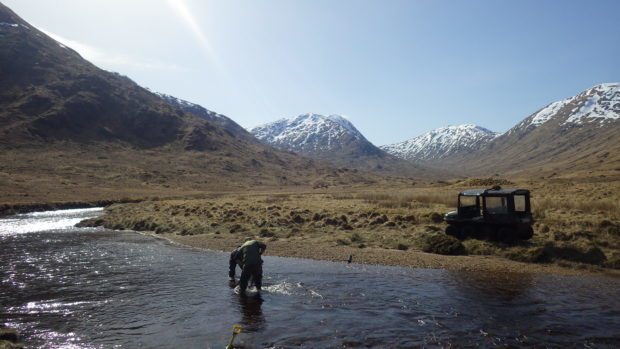Ground-breaking genetic profiling is being used to boost numbers of Atlantic salmon in a Highland river.
The first hatchery-reared eggs from the Upper Garry Salmon Restoration Project have been stocked into the river by the Ness District Salmon Fishery Board.
It is the first time in Scotland that applied genetics has been used to influence fisheries management practices. Wild River Garry salmon smolts were captured as they made the journey downstream to the sea in spring and grown on to maturity in captivity at the Drimsallie Salmon Hatchery in Lochaber.
This has allowed the lead-in time for advanced genetic profiling to ensure the fish used in the project are of the “correct” stock.
Chris Conroy, director of the Ness board, said: “Historical annual returns of up to 800 adult salmon annually through the fish counter at Garry Dam have shrunk to an average of 60 fish. This has triggered our multi-partner bid to reverse that trend.
“We’ve been developing this innovative fisheries management project quietly behind the scenes since 2012 and the introduction of the first eggs is a huge step forward.”
Each smolt, when captured, is fitted with a passive integrated transponder (PIT) which allows each fish to be identified in future. Prof Eric Verspoor, the director of the Rivers and Lochs Institute at Inverness College UHI, said: “This identified four main groups of Garry smolts and allows us to retain the specific characteristics of each group.
Genetic profiling also allows us to identify any full siblings. This means we can avoid negative effects of inbreeding, crucial in view of the Upper Garry’s 60-year decline in salmon numbers.”
Because salmon numbers are so low, the eggs of smolts are being “planted” in the river in a four-year bid to kickstart the salmon population. Mr Conroy said: “Stocking of eggs will focus on areas of suitable habitat identified by biologists from the Ness and Beauly Fisheries Trust.
“We’ve introduced 23,500 eggs across eight sites this year and we’ll be stocking up to 150,000 eggs each year for the next three years.”
When the eggs hatch they will begin feeding in their natural environment – thus avoiding the harmful effects of young fish becoming “domesticated” in a hatchery.
The genetic analysis and supported breeding project is also being backed by Scottish and Southern Energy, the Ness and Beauly Fisheries Trust, Marine Harvest and the Scottish Environment Protection Agency.










